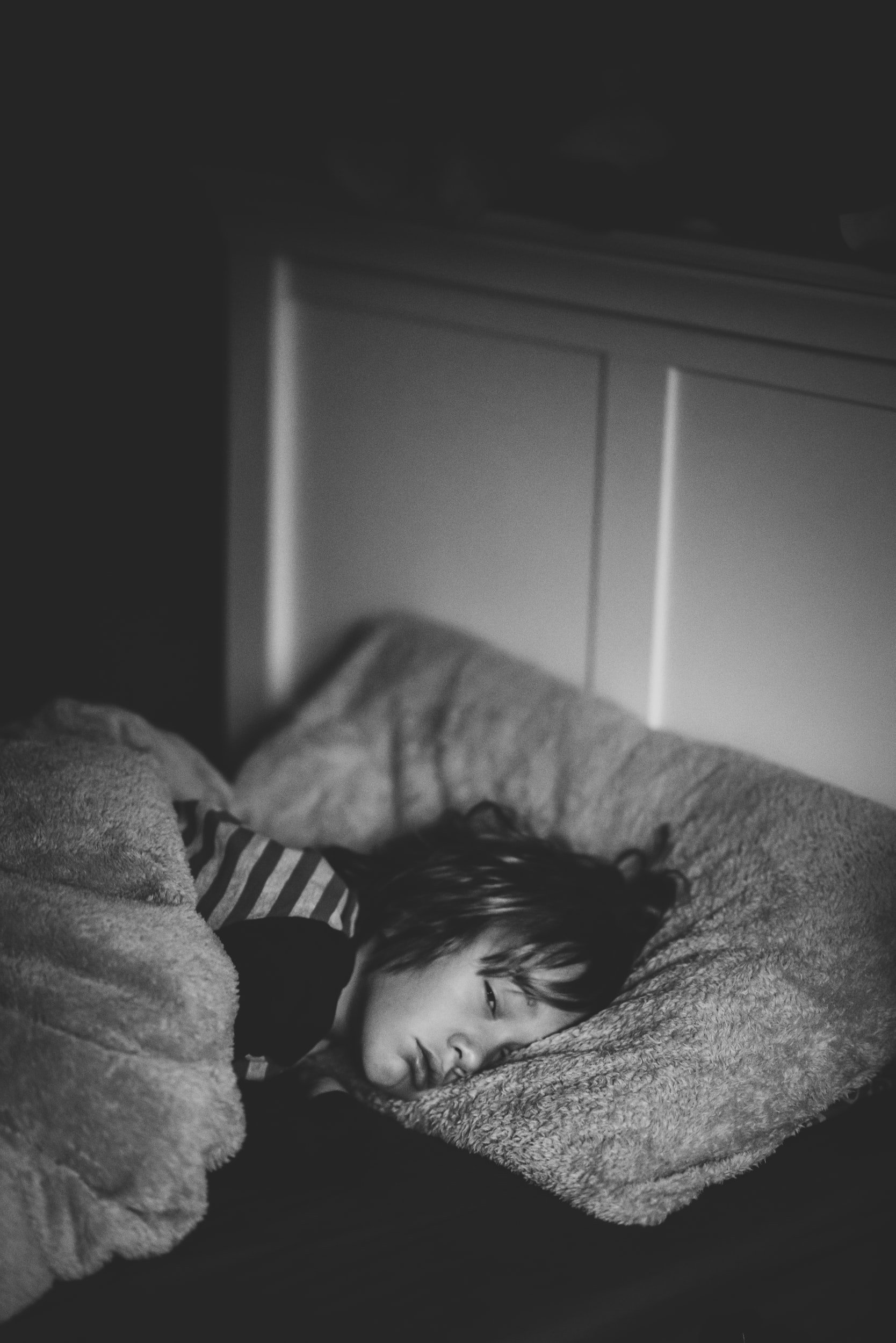What is bedtime fading?
Bedtime fading is a gentle strategy that works by helping your little one’s body clock re-align to a bedtime that works better for your family. Essentially, you begin by moving bedtime much later, then gradually moving it earlier again over several nights or a couple of weeks until you arrive at the desired bedtime.
Bedtime fading can be considered a form of sleep training by some, but it’s a very different approach because it is completely responsive and doesn’t aim to change overnight behaviors like night wakings. It simply uses sleep pressure to reduce bedtime disruptions. This is a no-cry technique and doesn’t involve leaving a child alone or withholding any comfort.
who should try it?
It’s often used with toddlers or preschoolers, as a way to curb chronic resistance around to going to bed (assuming there aren’t red flags, like real underlying issues causing this like anxiety or medical conditions).
The idea behind bedtime fading is to use increased sleep pressure to help the child fall asleep more quickly. This can help with children who often stall bedtime. One common reason for this is that they just aren’t tired enough, or they are stuck in a certain pattern of behavior around bedtime like negotiating or fighting for your attention.
why does it work?
If the child is very tired, and bedtime is shorter, and therefore more connected and less stressful for the parents, it can shift to a more positive (and quick!) experience for all. Essentially you are helping to fix negative associations with bedtime and poor sleep hygiene.
This technique usually works in 1-2 weeks but sometimes less.
One small study found that bedtime fading provide significant sleep benefits above control, yet convey no adverse stress responses or long-term effects on parent-child attachment or child emotions and behavior (Gradisar et al 2015).
how to do bedtime fading:
-
Start by understanding how much total sleep your child does best with overnight. Sometimes it’s less than we think, especially if they are still taking long naps. Track a week or so to find their “normal” sleep needs where they function well and seem well rested.
-
Take what you’ve gathered through noting bedtimes. So if they tend to need 10 hours overnight and naturally wake at 6:30am, you want to aim for an 8:30 bedtime. If you are currently starting your bedtime routine at 7pm, this is likely much too early for them.
-
Note the time your child actually falls asleep most nights. Then start your bedtime routine 15 minutes or so before that. For this example, say the child isn’t actually falling asleep until 9pm even though the routine starts at 7. Start the routine at 8:45, and aim for them to fall asleep much more quickly and with less fight. They still fall asleep around 9.
-
You can then gradually work towards shifting back to 8/8:30.
-
Once there’s been enough experience of success with the late bedtime (falling asleep pretty peacefully in 15-20 minutes or less), for 2-3 nights, you can gradually move it back in increments of 15 minutes or so every couple of nights until the desired time or until it stops working.
remember to:
-
Keep a consistent wake up time. You might be tempted to let your child “sleep in” after a later night, but this will undermine what you are trying to do and get set you off on a pattern of actually needing a very late bedtime to compensate.
-
Continue to wake up at your desired time (within a half hour is fine).
-
Avoid late naps. Even though your child might be more tired during this process, a late or long nap will reduce sleep pressure making it harder for them to fall asleep at your desired time and you’ll end up with an even later bedtime than you want.
-
Keep bedtime routine short and sweet. One reason bedtime fading works is because the child is very tired, so you don’t want a long and drawn out routine that reinforces the negative patterns you’ve been stuck in. You might even choose to change up your routine a bit.
What about overtiredness?
Overtiredness is less likely to be the culprit of bedtime battles than undertiredness in the first place. So, if your little one is stalling bedtime or taking hours to fall asleep at night, making bedtime EARLIER is very unlikely to help.
This is assuming your child is getting proper sleep. If your child is getting adequate sleep for their age, eating well, generally content, etc. and they aren’t completely wild at bedtime , it’s safe to assume overtiredness isn’t to blame.
While doing bedtime fading it might be harder for your child to stay awake for longer, and so you might start to see more fussiness or crankiness. But a little bit of overtiredness for a few days won’t be detrimental.
To recap:
Bedtime fading is an effective and gentle strategy used mostly for toddlers who are struggling at bedtime. Try it for up to a week or two to see how it goes!
Sources:
Cooney, M. R., Short, M. A., & Gradisar, M. (2018). An open trial of bedtime fading for sleep disturbances in preschool children: a parent group education approach. Sleep medicine, 46, 98–106. https://doi.org/10.1016/j.sleep.2018.03.003
Gradisar, M., Jackson, K., Spurrier, N. J., Gibson, J., Whitham, J., Williams, A. S., Dolby, R., & Kennaway, D. J. (2016). Behavioral Interventions for Infant Sleep Problems: A Randomized Controlled Trial. Pediatrics, 137(6), e20151486. https://doi.org/10.1542/peds.2015-1486



